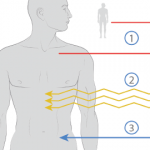These “designer” cells, says Dr. Guilak, point to a future vaccine. “With this research, we have laid the groundwork for a cell-based vaccine that can be used to treat a diverse array of autoimmune or inflammatory diseases. The sky is the limit.”
Elizabeth Hofheinz, MPH, MEd, is a freelance medical editor and writer based in the Greater New Orleans area.
ad goes here:advert-1
ADVERTISEMENT
SCROLL TO CONTINUE
Contributors’ note: This work was supported by The Arthritis Foundation, the Nancy Taylor Foundation for Chronic Diseases, Shriners Hospitals for Children, the National Institutes of Health and the AO Foundation.
Reference
- Brunger JM, Zutshi A, Willard VP, et al. Genome engineering of stem cells for autonomously regulated, closed-loop delivery of biologic drugs challenges and opportunities. Stem Cell Reports. 2017 May 9;8(5):1202–1213.


